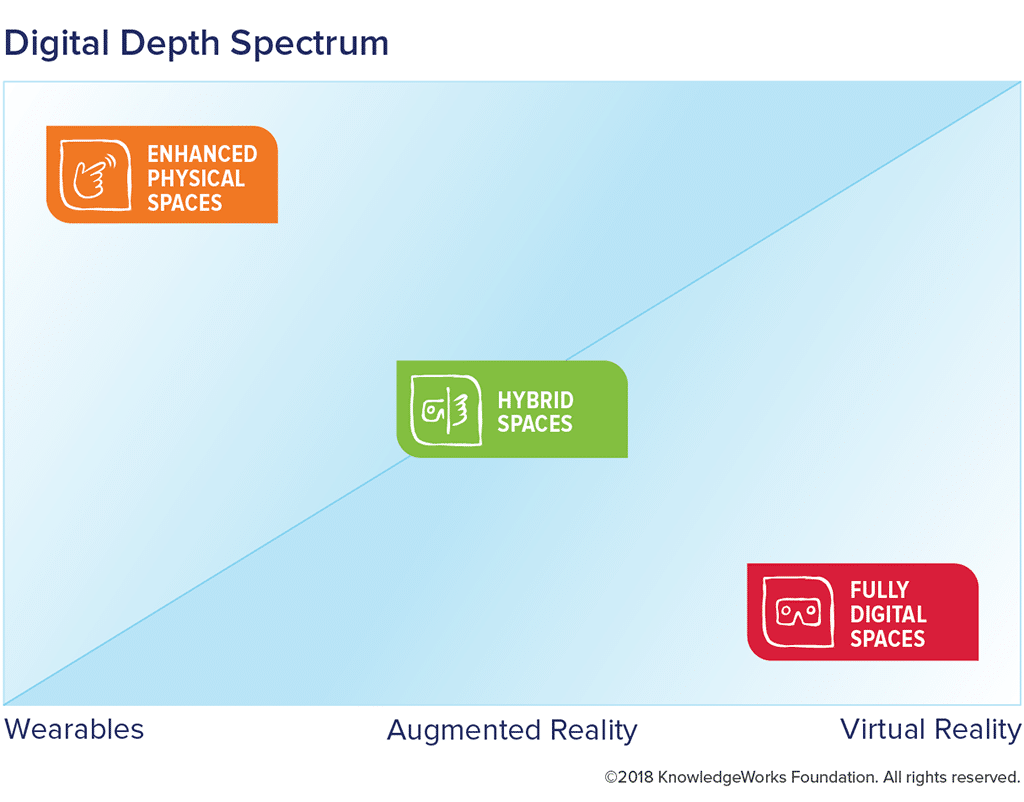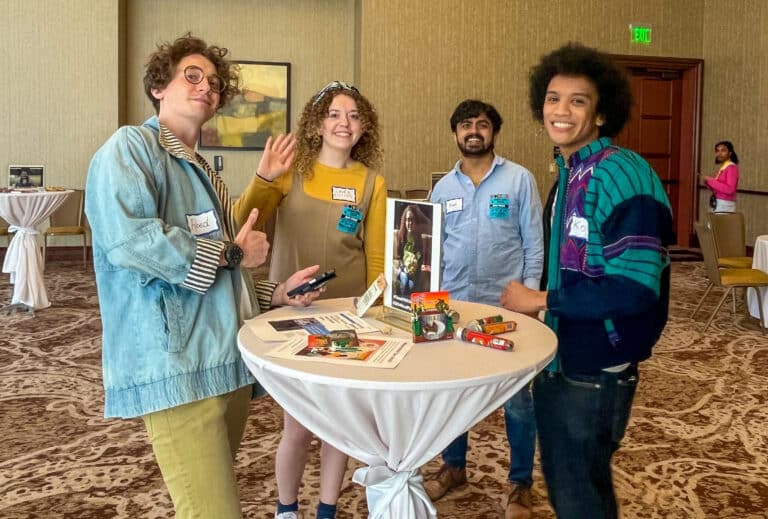Wearables, augmented reality and virtual reality alter the physical world by layering data, computing and connectivity onto our physical environments and adding “digital depth” to our physical experiences. Digital depth refers new kinds of spaces in which immersion, embodiment, contextualization and self-awareness can be used to create novel or enhanced learning environments. Over time, as wearables, augmented reality and virtual reality continue to mature, they will become increasingly powerful. They will also merge with each other and with other technologies, expanding and deepening the layers of digital depth around us and potentially contributing to the creation of responsive learning environments that support students and educators in achieving desired learning outcomes.
Three kinds of spaces are emerging from the growth of digital depth:
- Enhanced physical spaces are grounded in physical reality but have a thin layer of digital information capture, sharing,
and feedback. They have relatively low digital depth. Wearables are effective in creating enhanced physical space. Hybrid spaces use multiple digital layers and more extensive computer-generated content, connectivity, and experiences to enable experiences that have a higher degree of digital immersion but which are still anchored in physical space. - Hybrid spaces have moderate digital depth. Augmented reality creates hybrid spaces with new capabilities for collaboration, visualization, and creation.
- Fully digital spaces provide full immersion in digitally created environments with little reference to physical space. Because of their high levels of digital depth, they can allow for novel world building and for shifts in identity and perspective through embodiment, or taking on the identity and context of another person or character. Virtual reality supports the creation of fully digital spaces.

Together, these spaces form a digital depth spectrum as illustrated above. Each type of space supports a different degree of immersion, embodiment, contextualization and self-awareness.
Read more about the potential for technologies like wearables, augmented reality and virtual reality to add a layer of “digital depth” atop physical reality in Leveraging Digital Depth for Responsive Learning Environments Future Prospects for Wearables, Augmented Reality, and Virtual Reality.







